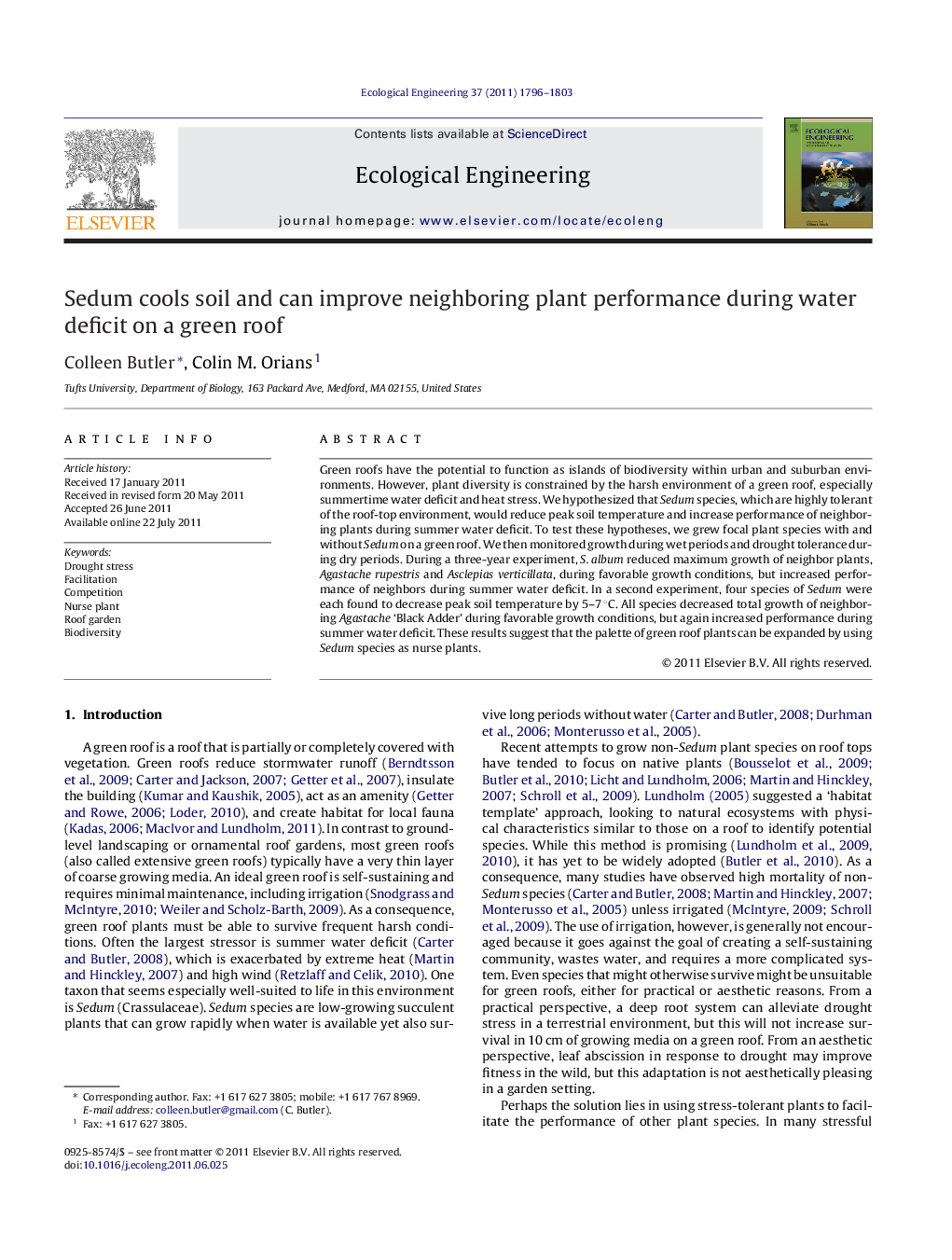| Article ID | Journal | Published Year | Pages | File Type |
|---|---|---|---|---|
| 4390131 | Ecological Engineering | 2011 | 8 Pages |
Green roofs have the potential to function as islands of biodiversity within urban and suburban environments. However, plant diversity is constrained by the harsh environment of a green roof, especially summertime water deficit and heat stress. We hypothesized that Sedum species, which are highly tolerant of the roof-top environment, would reduce peak soil temperature and increase performance of neighboring plants during summer water deficit. To test these hypotheses, we grew focal plant species with and without Sedum on a green roof. We then monitored growth during wet periods and drought tolerance during dry periods. During a three-year experiment, S. album reduced maximum growth of neighbor plants, Agastache rupestris and Asclepias verticillata, during favorable growth conditions, but increased performance of neighbors during summer water deficit. In a second experiment, four species of Sedum were each found to decrease peak soil temperature by 5–7 °C. All species decreased total growth of neighboring Agastache ‘Black Adder’ during favorable growth conditions, but again increased performance during summer water deficit. These results suggest that the palette of green roof plants can be expanded by using Sedum species as nurse plants.
• Green roofs have potential to function as islands of biodiversity in urban environments. • Sedum species reduced peak soil temperature by 5–7 °C. • Sedum species reduced growth of neighboring plant species during favorable conditions • Sedum species increased performance of neighboring plant species during summer water deficit. • The palette of green roof plants can be expanded by using Sedum species as nurse plants.
